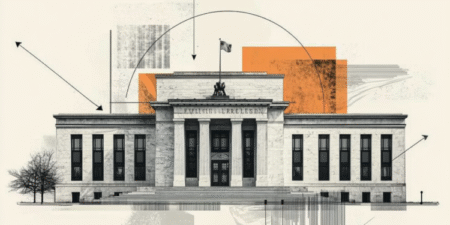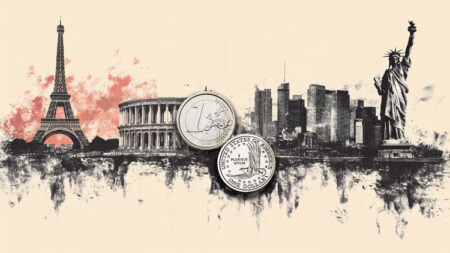- Gold buying remains unabated during the Asian session amid a supportive fundamental backdrop.
- Rising Fed rate cut bets, trade uncertainties, and geopolitical risks continue to benefit the bullion.
- A modest USD uptick could cap gains amid extremely overbought conditions ahead of the US data.
Gold touches a fresh record high, around the $3,547 region, during the Asian session on Wednesday, though it struggles to build on the momentum as bulls seem reluctant amid extremely overbought conditions. Furthermore, some follow-through US Dollar uptick turns out to be another factor that acts as a headwind for the commodity.
The upside for the USD, however, seems limited in the wake of firming expectations that the Federal Reserve (Fed) will lower borrowing costs later this month. Moreover, traders are pricing in the possibility that the US central bank will deliver two 25 basis points (bps) rate cuts by the end of this year, which should continue to offer support to the non-yielding yellow metal.
Meanwhile, investors remain on edge amid persistent trade-related uncertainties and renewed geopolitical risks stemming from the escalating Russia-Ukraine conflict and tensions in the Middle East. This is evident from a generally weaker tone around the equity markets, which further backs the case for an extension of an over one-week-old uptrend in the Gold price.
Traders now look forward to the release of the US JOLTS Job Openings data for some impetus later this Wednesday. This week’s US economic docket also features the release of the ADP report on private-sector employment and the ISM Services PMI on Thursday. The focus, however, will remain on the closely-watched US Nonfarm Payrolls (NFP) report, due on Friday.
Gold FAQs
Gold has played a key role in human’s history as it has been widely used as a store of value and medium of exchange. Currently, apart from its shine and usage for jewelry, the precious metal is widely seen as a safe-haven asset, meaning that it is considered a good investment during turbulent times. Gold is also widely seen as a hedge against inflation and against depreciating currencies as it doesn’t rely on any specific issuer or government.
Central banks are the biggest Gold holders. In their aim to support their currencies in turbulent times, central banks tend to diversify their reserves and buy Gold to improve the perceived strength of the economy and the currency. High Gold reserves can be a source of trust for a country’s solvency. Central banks added 1,136 tonnes of Gold worth around $70 billion to their reserves in 2022, according to data from the World Gold Council. This is the highest yearly purchase since records began. Central banks from emerging economies such as China, India and Turkey are quickly increasing their Gold reserves.
Gold has an inverse correlation with the US Dollar and US Treasuries, which are both major reserve and safe-haven assets. When the Dollar depreciates, Gold tends to rise, enabling investors and central banks to diversify their assets in turbulent times. Gold is also inversely correlated with risk assets. A rally in the stock market tends to weaken Gold price, while sell-offs in riskier markets tend to favor the precious metal.
The price can move due to a wide range of factors. Geopolitical instability or fears of a deep recession can quickly make Gold price escalate due to its safe-haven status. As a yield-less asset, Gold tends to rise with lower interest rates, while higher cost of money usually weighs down on the yellow metal. Still, most moves depend on how the US Dollar (USD) behaves as the asset is priced in dollars (XAU/USD). A strong Dollar tends to keep the price of Gold controlled, whereas a weaker Dollar is likely to push Gold prices up.
Read the full article here
















